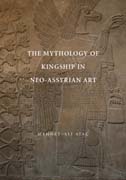
The relief slabs that decorated the palaces of the Neo-Assyrian Empire, which emphasized military conquest and royal prowess, have traditionally been understood as statements of imperial propaganda that glorified the Assyrian king. In this book, Mehmet-Ali Ataç argues that the reliefs hold a deeper meaning that was addressed primarily to an internal audience composed of court scholars and master craftsmen. Ataç focuses on representations of animals, depictions of the king as priest and warrior, and figures of mythological beings that evoke an archaic cosmos. He demonstrates that these images mask a complex philosophical rhetoric developed by court scholars in collaboration with master craftsmen who were responsible for their design and execution. Ataç argues that the layers of meaning embedded in the Neo-Assyrian palace reliefs go deeper than politics, imperial propaganda, and straightforward historical record. INDICE: Part I. Human and Animal Ontology in Assyrian Art: Introduction; 1. Ashurnasirpal II; 2. Tiglath-Pileser III; 3. Sargon II; 4. Sennacherib; 5. Ashurbanipal; Conclusion to Part I; Part II. Kingship and Priesthood in the Art of Ashurnasirpal II: Introduction; 6. The king, non-king; 7. 'La sale dite 'g''; 8. The mixta persona; 9. The king and the 'sacred tree'; 10. The encounter; Conclusion to Part II; Part III. The Semantics of Sages and Mischwesen in Assyrian Art and Thought: Introduction; 11. Before the flood; 12. Fertilization and purification; 13. King the man, the king-man; 14. 'Tiamat's brood'; 15. The ancient Mesopotamian flood traditions; 16. Lord of the netherworld; Conclusion to Part III; Epilogue.
- ISBN: 978-1-107-62760-4
- Editorial: Cambridge University Press
- Encuadernacion: Rústica
- Páginas: 297
- Fecha Publicación: 21/04/2014
- Nº Volúmenes: 1
- Idioma: Inglés
